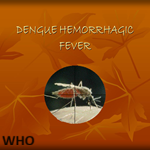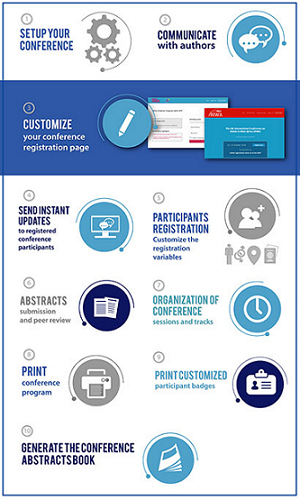Cholera Outbreak in Homa Bay County, Kenya, 2015
Jane Njoki Githuku, Waqo Gufu Boru, Casey Daniel Hall, Zeinab Gura, Elvis Oyugi, Rogath Saika Kishimba, Innocent Semali, Ghada Nadim Farhat, Meeyoung Mattie Park
Corresponding author: Jane Njoki Githuku, Kenya Field Epidemiology and Laboratory Training Program, Ministry of Health, Kenya 
Received: 19 Apr 2017 - Accepted: 05 May 2017 - Published: 28 May 2017
Domain: Epidemiology,Epidemiology,Infectious diseases epidemiology
Keywords: Public Health, epidemiology, cholera, re-emerging disease, outbreak investigation
This article is published as part of the supplement African Case Studies in Public Heath, commissioned by Emory University, African Field Epidemiology Network (AFENET).
©Jane Njoki Githuku et al. Pan African Medical Journal (ISSN: 1937-8688). This is an Open Access article distributed under the terms of the Creative Commons Attribution International 4.0 License (https://creativecommons.org/licenses/by/4.0/), which permits unrestricted use, distribution, and reproduction in any medium, provided the original work is properly cited.
Cite this article: Jane Njoki Githuku et al. Cholera Outbreak in Homa Bay County, Kenya, 2015. Pan African Medical Journal. 2017;27(1):4. [doi: 10.11604/pamj.supp.2017.27.1.12563]
Available online at: https://www.panafrican-med-journal.com/content/series/27/1/4/full
Cholera outbreak in Homa Bay County, Kenya, 2015
Jane Njoki Githuku1,&, Waqo Gufu Boru1, Casey Daniel Hall2, Zeinab Gura1, Elvis Oyugi1, Rogath Saika Kishimba3,4, Innocent Semali5, Ghada Nadim Farhat2, Meeyoung Mattie Park2
1Kenya Field Epidemiology and Laboratory Training Program, Ministry of Health, Kenya, 2Rollins School of Public Health, Emory University, Atlanta, USA, 3Tanzania Ministry of Health and Social Welfare, Tanzania, 4Tanzania Field Epidemiology and Laboratory Training Program, Tanzania, 5Muhimbili University of Health and Allied Sciences, Dar es Salaam, Tanzania
&Corresponding author
Jane Njoki Githuku, Kenya Field Epidemiology and Laboratory Training Program, Ministry of Health, Kenya
Cholera is among the re-emerging diseases in Kenya. Beginning in December 2014, a persistent outbreak occurred involving 29 out of the 47 countries. Homa Bay County in Western Kenya was among the first counties to report cholera cases from January to April 2015. This case study is based on an outbreak investigation conducted by FELTP residents in Homa Bay County in February 2015. It simulates an outbreak investigation including laboratory confirmation, active case finding, descriptive epidemiology and implementation of control measures. This case study is designed for the training of basic level field epidemiology trainees or any other health care workers working in public health-related fields. It can be administered in 2-3 hours. Used as adjunct training material, the case study provides the trainees with competencies in investigating an outbreak in preparation for the actual real-life experience of such outbreaks.
General instructions: this case study should be used as adjunct training material for novice epidemiology trainees to reinforce the concepts taught in prior lectures. The case study is ideally taught by a facilitator in groups of about 20 participants. Participants are to take turns reading the case study, usually a paragraph per student. The facilitator guides the discussion on possible responses to questions. The facilitator may make use of flip charts to illustrate certain points. Additional instructor’s notes for facilitation are coupled with each question in the instructor’s guide to aid facilitation.
Audience: this case study was developed for novice field epidemiology students. These participants are commonly health care workers working in the county departments of health whose background may be as medical doctors, nurses, environmental health officers or laboratory scientists who work in public health-related fields. Most have a health science or biology background.
Prerequisites: before using this case study, participants should have received lectures on disease surveillance and outbreak investigation.
Materials needed: flash drive, flip charts, markers, computers with MS Excel
Level of training and associated public health activity: Novice – Outbreak investigation
Time required: 2-3 hours
Language: English
- Download the case study student guide (PDF - 1.69 MB)
- Request the case study facilitator guide.
The authors declare no competing interest.
We wish to acknowledge residents of the field epidemiology and laboratory training program who conducted the outbreak investigation on which this case study is based. We also wish to appreciate the county department of Health, Homa Bay County in which the outbreak investigation was conducted. We also appreciate the contribution of Emory University and the African Field Epidemiology Network for facilitating the development of this case study, as well as the following for their review during the case study development workshop: Mahmood Dalhat, Olufunmilayo Fawole, Joseph Frimpong, Notion Gombe, Gerald Shambira, and Doreen Tuhebwe.
- County Government of Homa bay. County Government of Homa bay “A County of Choice” First County Integrated Development Plan. 2013. Google Scholar
- CDC. Differential diagnosis: outbreaks of acute watery diarrhea. In Global Disease Detection (GDD) Manual “Rapid Diagnostic Tests for Epidemic Diseases” 2011 (draft). Atlanta, GA, CDC. 2011. Google Scholar
- Dawson AL, Ailes EC, Gilboa SM, Simeone RM, Lind JN, Farr SL et al. Antidepressant Prescription Claims Among Reproductive-Aged Women With Private Employer-Sponsored Insurance - United States 2008-201 MMWR. 2016; 65(3): 41–6. PubMed | Google Scholar
- World Health Organization. Centers for Disease Control and Prevention and Ministry of Health. Technical Guidelines for Integrated Disease Surveillance and Response in Kenya. 2012; 350. Google Scholar










